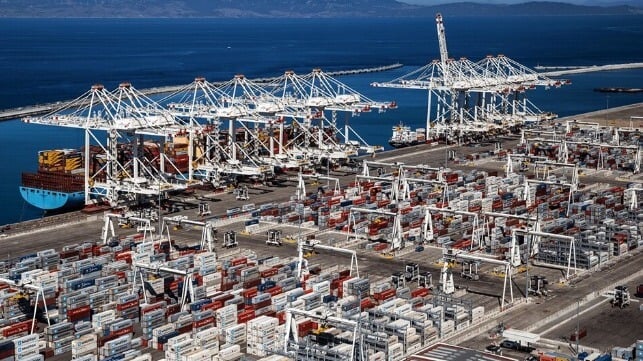Red Sea Diversions are Overloading Mediterranean Transshipment Ports

Europe’s transship ports serving the Mediterranean have become the latest to feel the repercussions of the diversions from the Red Sea with many of the ports warning of crowing and lack of capacity as well as longer them normal wait times. In a new report by the Financial Times, they cite overflowing storage yards and severe port congestion which they warn is the latest threat to supply chains.
Experts had previously predicted that the popular transshipment ports including Tangier-Med in Morocco and Algeciras in Spain were likely to experience increased traffic and volumes as carriers began to adjust schedules in 2024 after the introduction of the EU carbon charges. The FuelEU Maritime Regulation known as Fit for 55 was expected to increase the volume of transshipped cargo and the use of feeder vessels. Likely transshipment ports were identified for special consideration in the legislation as sponsored projected carriers would increase transshipments.
The Financial Times is quoting executives from the container terminals in the Western Mediterranean as saying they were all experiencing increases in volumes in 2024 attributed to the vessels diverting from Red Sea – Suez Canal routes to voyages around Africa.
“Many vessels are dropping off containers at ports on the western side of the Mediterranean such as Algeciras and Tangier,” writes the Financial Times. They are quoting analysts saying it has caused disruptions as critical ports struggle with sharp volume increases. As an example, they cite a 17 percent year-over-year increase in container volumes at Barcelona in February 2024.
Early in April, Maersk warned customers in its European Market Update that it was taking steps including “a number of omissions, diversions, and flow adjustments,” to mitigate the pressures of high yard densities. Specifically, Maersk said it was monitoring yard density levels, especially in Barcelona, Tangier, and Algeciras.
“Due to a congested line-up and increased waiting times at the Port of Barcelona, yard density has increased, and customers are kindly asked to pick up both their import units and empty containers as early as possible. In Algeciras and Tangier, adverse weather conditions and flow delays have contributed to a similar outcome,” Maersk advised its customers.
Executives in Algeciras told the Financial Times that their facility was “quite full” and warned that “capacity is very limited.” They told the reporters the terminal was restricting the amount of business it was accepting to avoid severe congestion.
Executives in Tangier echoed a similar sentiment saying their yard is “nearly full,” the Financial Times writes. The newspaper’s analysis also showed the vessels are regularly waiting for berths at these ports.
By optimizing connections and reducing transshipment moves as well as obtaining addition moves, Maersk said its teams are working on improving the density levels. They told customers these steps were expected to result in reduced density levels over the next few weeks.
Analysts however warn the overall pressures are likely to continue due to the combination of the new EU rules along with the expectation that containerships scheduled to service the Mediterranean on routes through the Suez Canal will continue diversions in the near term.
